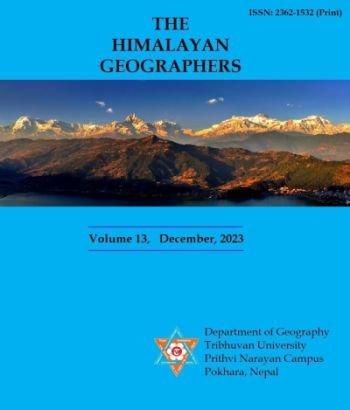Socio-Economic Characteristics of In-Migrants: A Study of Pokhara Metropolitan City -17
DOI:
https://doi.org/10.3126/thg.v13i1.71349Keywords:
Migration, ecological regions, internal migration, population, rural and urban, demographyAbstract
People want to migrate, where there are facilities of education, jobs, health, good facilities of food and so on. So, in Nepal people migrate from rural village areas to urban cities. Pokhara is a city of Gandaki Province situated in the western region of Nepal and it is situated on the broad valley of Seti river. The trend of in-migration in ward -17 (Birauta) of Pokhara Metropolitan City is very high. The rate of influx increases in this area is just after the construction of Phewa dam. The study utilizes a combination of qualitative and quantitative data collection methods. The study is based on the field survey of 2019 A.D. and population migration data of Nepal of 2011 published in the Population Monograph of Nepal, NPC secretariat, CBS, 2011 A.D. The available data are calculated (in percent) and are analyzed systematically. Pokhara is a second largest city of hilly region. It has good network system of roads and communication. In-migrant from its surrounding hill villages and districts have migrated to ward-17 of Pokhara. People from their origin are leaving their native place due to the availability of different modern urban facilities. Besides this, in-migrants who are employed in Foreign Service also prefer this place to settle instead of their village, because of education, health, transportation, recreation facilities, etc.
Downloads
Downloads
Published
How to Cite
Issue
Section
License
Copyright (c) 2023 The Author(s)

This work is licensed under a Creative Commons Attribution-NonCommercial 4.0 International License.
This license enables reusers to distribute, remix, adapt, and build upon the material in any medium or format for noncommercial purposes only, and only so long as attribution is given to the creator.




